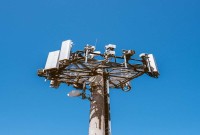- Home
- Business Processes
- Industry Knowledge
- Aerospace Industry
- Automotive Industry
- Banking Domain
- BFSI Industry
- Consumer/ FMCG Industry
- Chemicals Industry
- Engineering & Construction
- Energy Industry
- Education Domain
- Finance Domain
- Hospitality Domain
- Healthcare Industry
- Insurance Domain
- Retail Industry
- Travel and Tourism Domain
- Telecom Industry
- Leadership Skills
- eLearning
- Home
- Domain Knowledge
- Telecom Industry
- Overview of the Telecommunications Industry
Overview of the Telecommunications Industry
Modern telecommunications industry players produce communication equipment and deliver a set of voice, data, and broadband services using wireline or wired infrastructure of cables, networks, servers, computers, and satellites. In this article, we will define the telecom industry and discuss some of the key business drivers. Understand the various constituents of the telecommunication services sector followed by a small discussion on current industry trends.
Telecommunication is the transmission of information over significant distances to communicate. In earlier times, telecommunications involved the use of visual signals, such as beacons, smoke signals, semaphore telegraphs, signal flags, and optical heliographs, or audio messages such as coded drumbeats, lung-blown horns, and loud whistles. In modern times, telecommunications involves the use of electrical devices such as the telegraph, telephone, radio, and microwave communications. Communication channels make use of fiber optics and their associated electronics, orbiting satellites, and the Internet. Modern telecommunications industry players produce communication equipment and deliver a set of voice, data, and broadband services using wireline or wired infrastructure of cables, networks, servers, computers, and satellites.
This industry is highly sensitive to the slightest change in regulatory, technological, and economic factors and has its own share of challenges largely stemming from these factors. With wireless and broadband providing the needed momentum to their growth, the industry players adopt unique strategies to overcome these challenges and move forward to connect people to people and organizations.
In today’s world the telephone, long-distance, cable/video, cellular, and telecommunications equipment industries are increasingly intertwined. Major challenges of this industry are globalization trends, competitive implications of new technologies, and the changing regulatory environment.
Modern Telecommunication Tools:
Modern telecommunications tools are Telephone (Including mobile telephony), Radio and Television, Internet, and Communications Networks (LAN and WAN).
1. Telephone:
In a telephone network, the caller is connected to the person he wants to talk to by switches at various telephone exchanges. The switches form an electrical connection between the two users and the setting of these switches is determined electronically when the caller dials the number. The fixed-line telephones in most residential homes are analog however increasingly telephone service providers are converting the signals to digital for transmission before converting them back to analog for the reception. This enables digitized voice data traveling side-by-side with data from the Internet.
2. Mobile Phones:
Mobile phones have had a significant impact on telephone networks. Mobile phone subscriptions now outnumber fixed-line subscriptions in many markets. Sales of mobile phones in 2005 totaled 816.6 million.
3. Radio and television:
In a broadcast system, the central high-powered broadcast tower transmits a high-frequency electromagnetic wave to numerous low-powered receivers. The high-frequency wave sent by the tower is modulated with a signal containing visual or audio information. The receiver is then tuned so as to pick up the high-frequency wave and a demodulator is used to retrieve the signal containing the visual or audio information. The broadcast signal can be either analog or digital.
The broadcast media industry is at a critical turning point in its development, with many countries moving from analog to digital broadcasts. This move is made possible by the production of cheaper, faster and more capable integrated circuits. The chief advantage of digital broadcasts is that they prevent a number of complaints common to traditional analog broadcasts.
4. Internet:
The Internet is a worldwide network of computers and computer networks that can communicate with each other using the Internet Protocol. Any computer on the Internet has a unique IP address that can be used by other computers to route information to it. Hence, any computer on the Internet can send a message to any other computer using its IP address. These messages carry with them the originating computer's IP address allowing for two-way communication. The Internet is thus an exchange of messages between computers.
5. Local area networks and wide area networks:
Despite the growth of the Internet, the characteristics of local area networks ("LANs" – computer networks that do not extend beyond a few kilometers in size) remain distinct. This is because networks on this scale do not require all the features associated with larger networks and are often more cost-effective and efficient without them. When they are not connected with the Internet, they also have the advantages of privacy and security. However, purposefully lacking a direct connection to the Internet will not provide 100% protection of the LAN from hackers, military forces, or economic powers. These threats exist if there are any methods for connecting remotely to the LAN.
There are also independent wide area networks ("WANs" – private computer networks that can and do extend for thousands of kilometers.) Once again, some of their advantages include their privacy, security, and complete ignoring of any potential hackers – who cannot "touch" them. Of course, prime users of private LANs and WANs include armed forces and intelligence agencies that must keep their information completely secure and secret.
Telecommunications as an Industry:
Telecom is the fifth largest and fastest-growing industry in the world. Telecommunications play an important role in the world economy and the worldwide telecommunication industry's revenue was estimated to be $3.85 trillion in 2008. The service revenue of the global telecommunications industry was estimated to be $1.7 trillion in 2008 and is expected to touch $2.7 trillion by 2013. The telecommunications industry can be classified as the equipment sector and the services sector.
Telecommunications Equipment & Services Sector:
The equipment sector is comprised of companies that manufacture products that are used by both customers and other companies in the same sector. Customers use these products to access telecommunications services, whereas other companies use these products to create and maintain telecommunications infrastructure and deliver telecom services. The equipment sector includes satellite and broadcast network equipment, wireless and wireline equipment, as well as computer networking equipment. Services Sector is also comprised of wired, wireless services and internet and other broadband services.
Related Links
You May Also Like
-
Telecommunications Industry & Deregulation
The Telecommunications Act removed regulatory barriers to entry, opening up the market to new competitors. Deregulation led to a large number of new players. The third factor having a great influence on the modern telecommunication industry is deregulation. This article will discuss some thoughts on the impact of deregulation and unfettered competition on industry and a brief debate on deregulation versus some new form of regulatory intervention.
-
Telecom Industry & Globalization
The telecommunications sector is an important strategic segment of the modern economy. As globalization set the stage, the telecommunications industry became gradually a more global industry with increasing competition. The first factor shaping the telecommunication industry to what it is today is globalization. The telecommunications industry transports information at such incredible speeds that the concept of the virtual world has become true. This article will discuss the impact of globalization and the risks and opportunities it present to the industry.
-
Telecom Industry: Supply & Value Chain
The telecommunications industry has a complex set of suppliers, including vendors for equipment, infrastructure, and service providers. Many service providers own their own transmission networks and infrastructure but there are many who might lease from other players. What is the revenue metric for telecom and who are the major stakeholders in this industry? Read to find out!
-
Telecommunications Industry – Business Drivers
To provide solutions to clients in the Telecom industry, it is critical to have a comprehensive understanding of their business, their objectives, and their challenges – those business challenges unique to their organization as well as those triggered by the industry and marketplace. The following article provides an overview of the key business drivers that are impacting telecom carriers and hardware providers.
-
Telecom Industry & Technological Innovations
The second factor influencing the telecommunication industry greatly is technological advances. Technological advances in recent times have dramatically changed the dynamics of players involved in the telecommunications infrastructure, equipment, and services sectors. This article will discuss the impact of technological advances and the risks and opportunities it present to the industry. Shift to 5G, AI, IoT, etc. and adoption of these technologies are current telecom trends.
-
History of Telecommunications Industry
The history of telecommunication began with the use of smoke signals and drums in Africa, the Americas, and parts of Asia. In the 1790s, the first fixed semaphore systems emerged in Europe; however, it was not until the 1830s that electrical telecommunication systems started to appear. Follow this advancement from smoke signals to modern-day internet and mobile technology, understanding the events that have shaped the world of telecommunications.
-
Debate on Need for Deregulation
There are many arguments in favor of deregulation. Advocates argue that continued regulation can only support the development of static markets whereas deregulation is necessary for the development of dynamic markets. Market convergence and related infrastructure competition are more likely to take place in dynamic markets. In many telecom markets, deregulation is currently being discussed, in this article, we will examine the impact of deregulation on the overall economy and study arguments that are placed in favor and against deregulation.
-
Imperatives of Telecommunication Industry
The telecommunications industry continues to grow steadily on a global scale. The most important imperatives shaping the modern telecommunications industry are globalization (worldwide scale), technology (latest advancements), and deregulation. The first factor shaping the telecommunication industry to what it is today is globalization. The second factor influencing the telecommunication industry greatly is technological advances. This article briefly discusses these three imperatives.
-
International Telecommunications
The telecommunications industry has been among the best performing industries in the world in recent years. Until the 1980s, the governance and regulation of international telecommunications regulation were relatively straightforward where state-owned telecom companies provided services within discrete national boundaries. International traffic was carried at rates mutually agreed upon by governments and their respective national carriers. A brief discussion of how the industry is shifting to a multilateral trade framework.
-
Overview of the Telecommunications Industry
Modern telecommunications industry players produce communication equipment and deliver a set of voice, data, and broadband services using wireline or wired infrastructure of cables, networks, servers, computers, and satellites. In this article, we will define the telecom industry and discuss some of the key business drivers. Understand the various constituents of the telecommunication services sector followed by a small discussion on current industry trends.
Explore Our Free Training Articles or
Sign Up to Start With Our eLearning Courses

About Us
Learning
© 2023 TechnoFunc, All Rights Reserved










